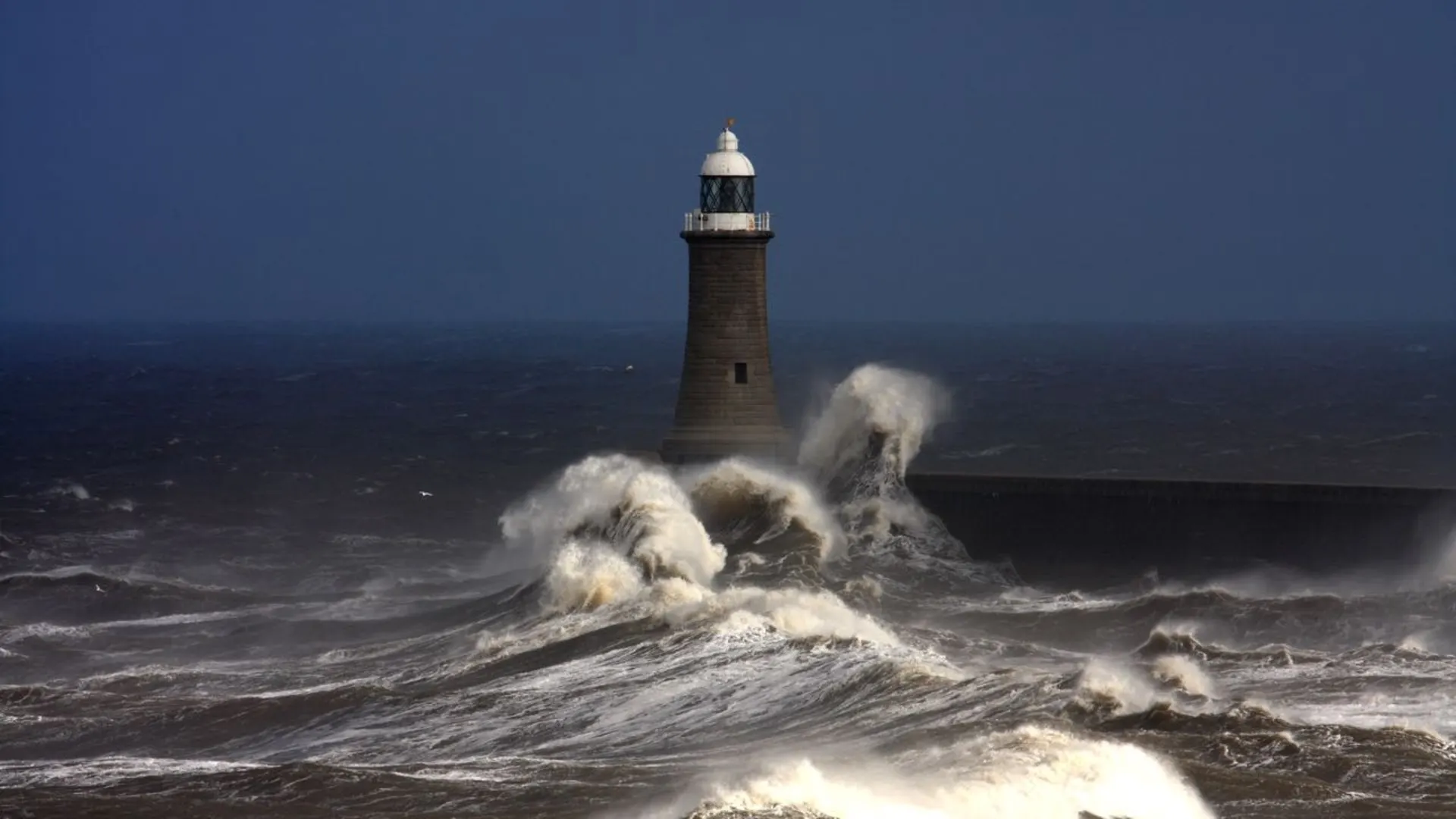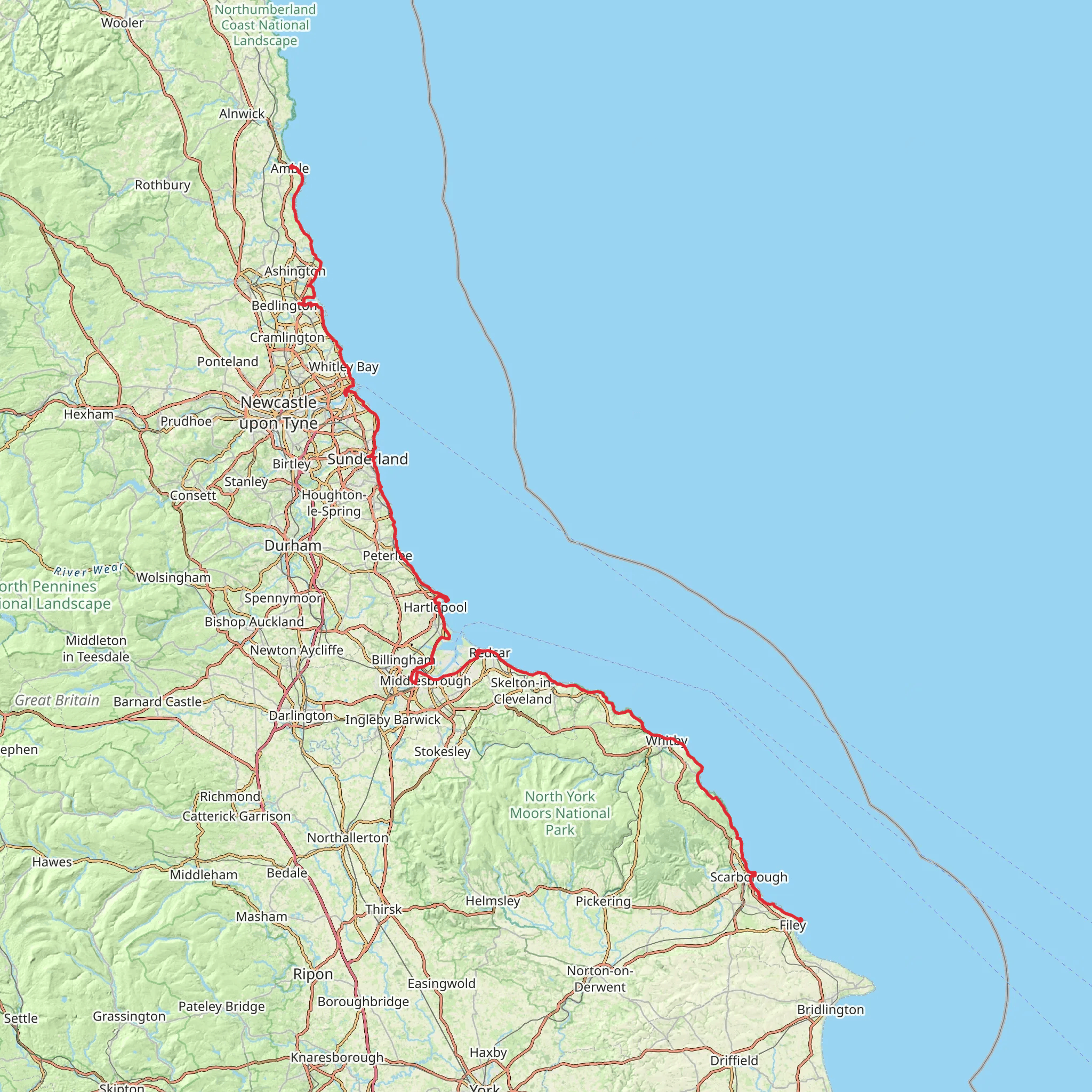Download
Preview
Add to list
More
251.0 km
~13 days
1898 m
Multi-Day
“Embark on a captivating 251-kilometer odyssey along England's Northeast coast, brimming with historic landmarks, diverse wildlife, and awe-inspiring vistas.”
Spanning approximately 251 kilometers (about 156 miles) with an elevation gain of around 1800 meters (roughly 5905 feet), the England Coast Path in the Northeast stretches from the starting point near North Yorkshire, England, and offers a medium difficulty level for hikers. This point-to-point trail is a part of the England Coast Path National Trail, which is an ambitious project aiming to create a continuous walking route around the entire coast of England.Getting to the TrailheadThe trailhead, located near North Yorkshire, is accessible by both public transport and car. For those opting for public transport, there are train services to nearby towns such as Scarborough or Whitby, from where local buses can take you closer to the starting point. If driving, you can navigate to the nearest significant landmark or address to the trailhead and find parking facilities before beginning your hike.Navigating the TrailAs you embark on this coastal journey, you'll find that the trail is well-marked, but carrying a reliable navigation tool like HiiKER is advisable to stay on track and be aware of upcoming waypoints. The path meanders along rugged cliffs, sandy beaches, and rolling hills, offering a diverse walking experience.Landmarks and Historical SignificanceThe trail is rich in historical significance, passing through ancient fishing villages and near historic castles, such as the dramatic ruins of Whitby Abbey, which dates back to the 7th century. The Abbey is approximately 35 kilometers (22 miles) from the start and is perched atop a cliff, providing spectacular views of the surrounding area.As you continue, you'll encounter the Bempton Cliffs around 100 kilometers (62 miles) into your hike. This RSPB nature reserve is home to the UK's largest seabird colony, including puffins and gannets, especially during the breeding season from March to October.Nature and WildlifeThe trail offers an opportunity to immerse yourself in the natural beauty of the English coastline. Expect to see a variety of wildlife, including seabirds, seals, and possibly even dolphins or whales off the coast. The flora along the path is equally diverse, with coastal heathlands and wildflowers in the spring and summer months.Terrain and ConditionsThe terrain varies from flat, easy sections to more challenging, steep climbs, particularly as you navigate the cliff-top paths. Weather conditions can change rapidly, so it's essential to be prepared with appropriate clothing and gear. The trail can be muddy and slippery in places, especially after rain, so sturdy waterproof boots are recommended.Planning Your HikeGiven the length of the trail, planning is crucial. There are several towns and villages along the route where you can restock supplies, find accommodation, or enjoy local cuisine. It's advisable to book accommodations in advance, especially during peak seasons.Remember to respect the environment and follow the Leave No Trace principles to preserve the beauty of the coastline for future hikers. Always check the tide times for sections that may be impassable at high tide and be aware of any local restrictions or conservation efforts in place to protect the delicate ecosystems you'll be exploring.
What to expect?
Activity types
Comments and Reviews
User comments, reviews and discussions about the England Coast Paths - Northeast, England.
4.8
average rating out of 5
5 rating(s)

